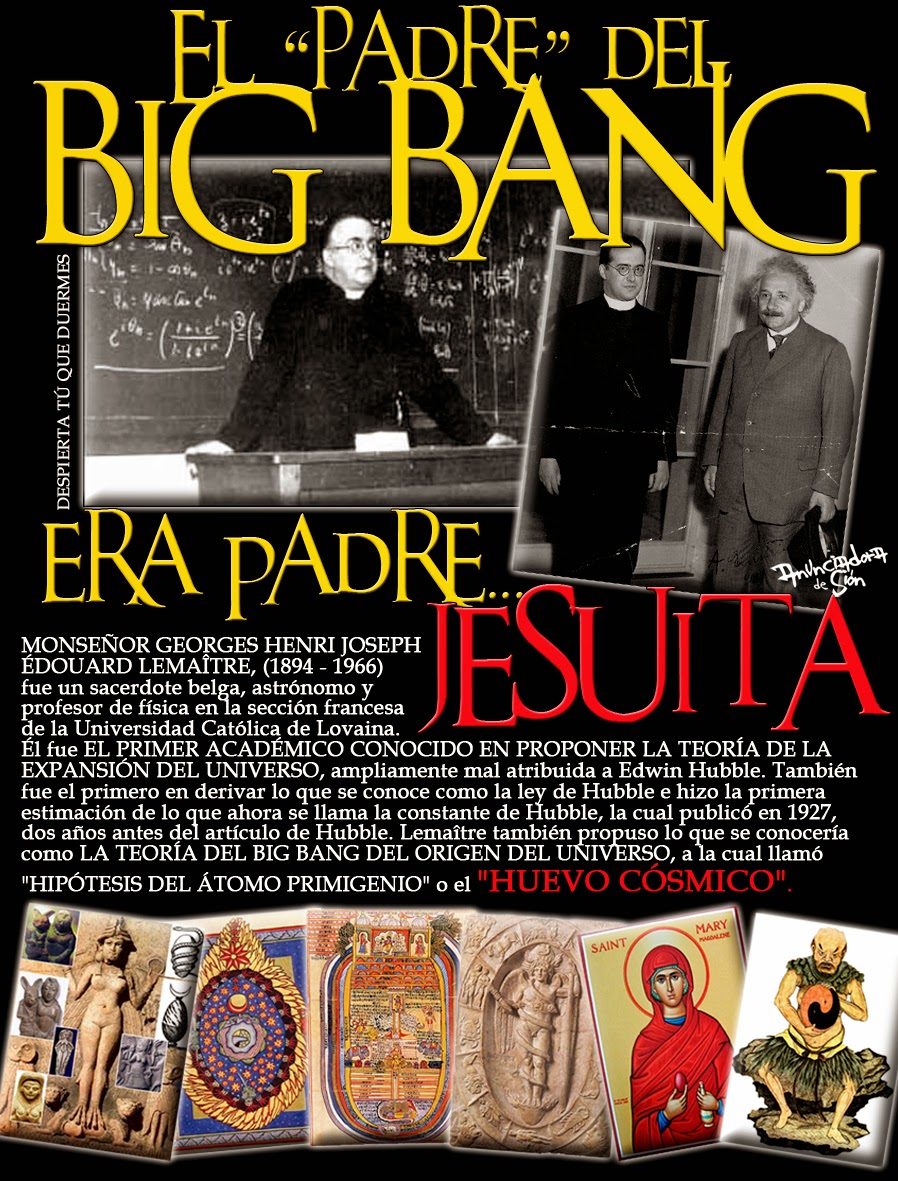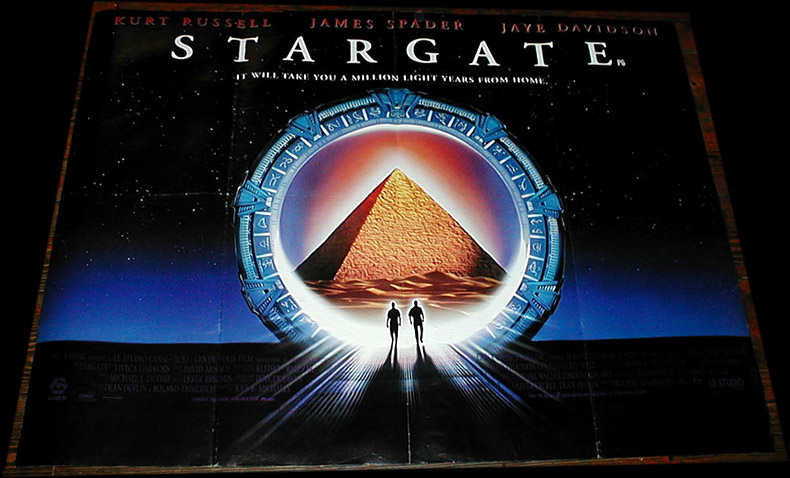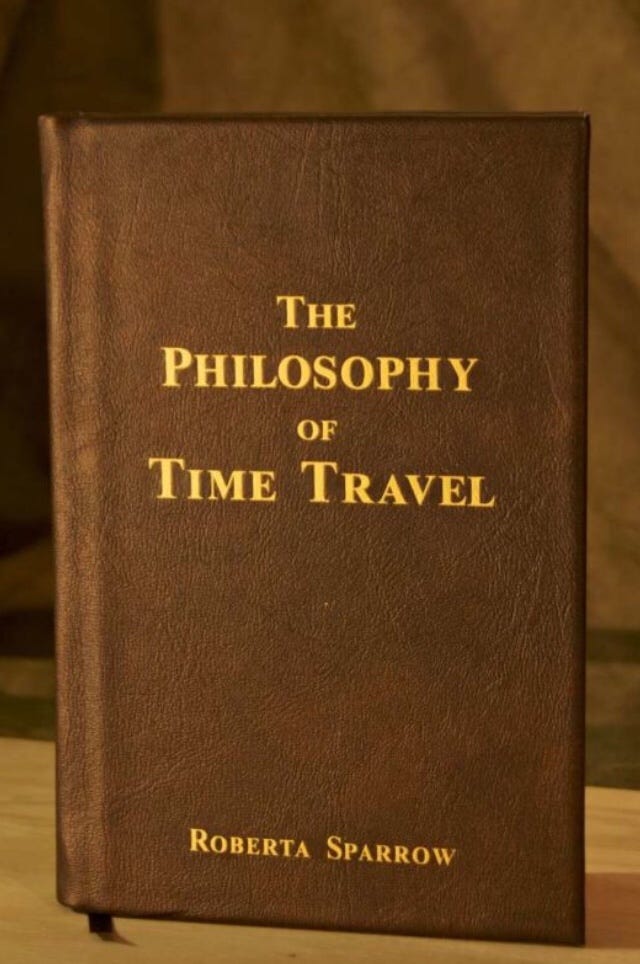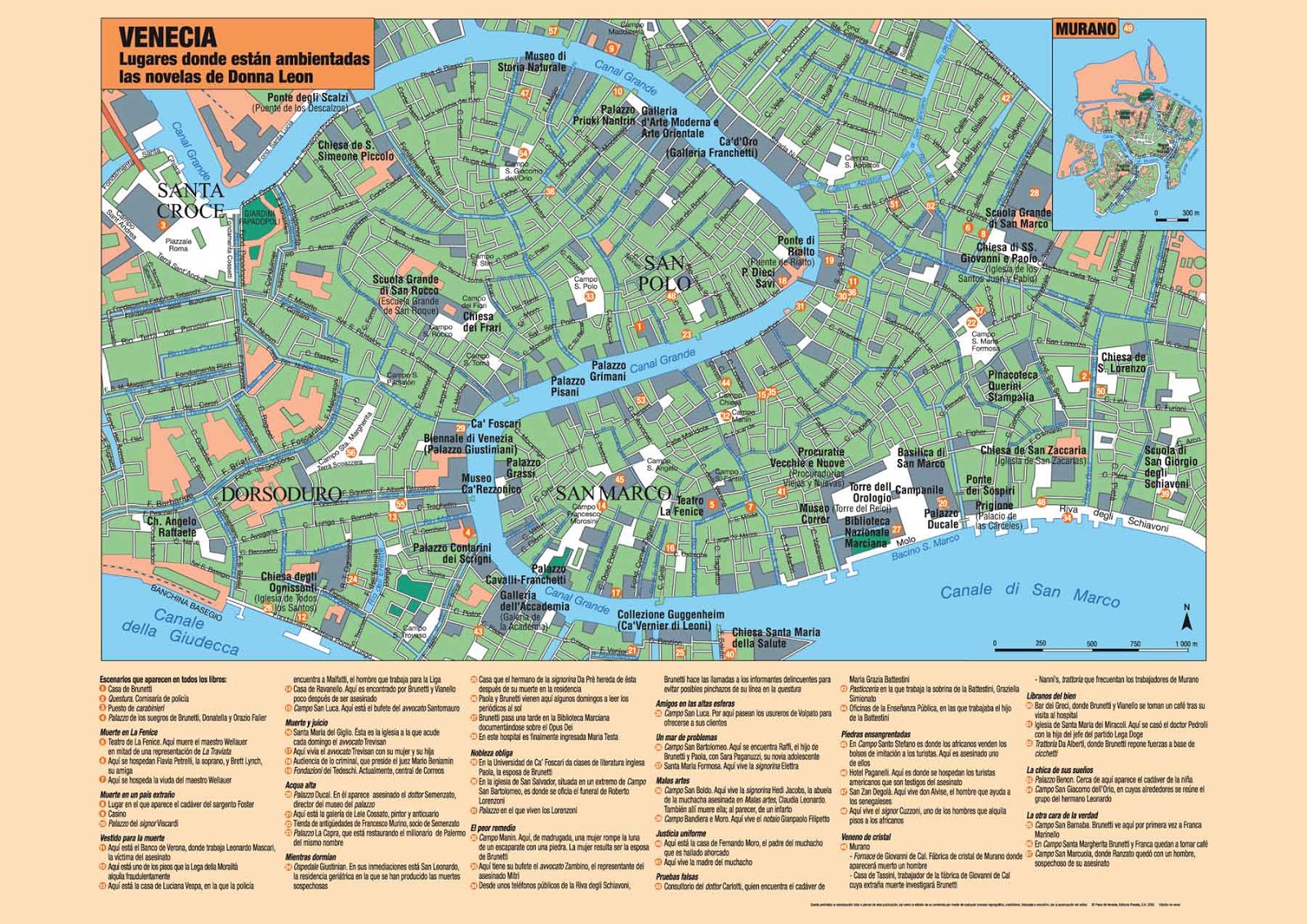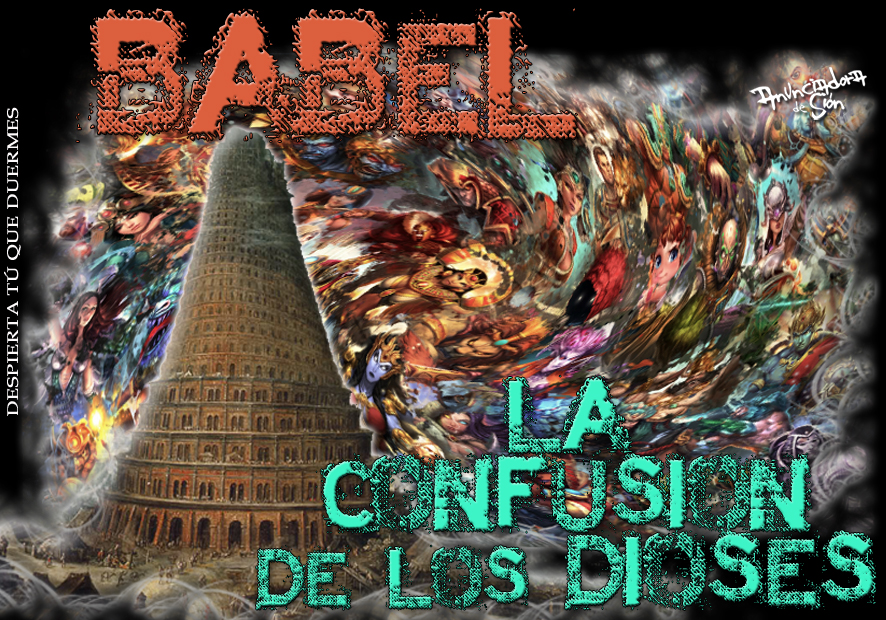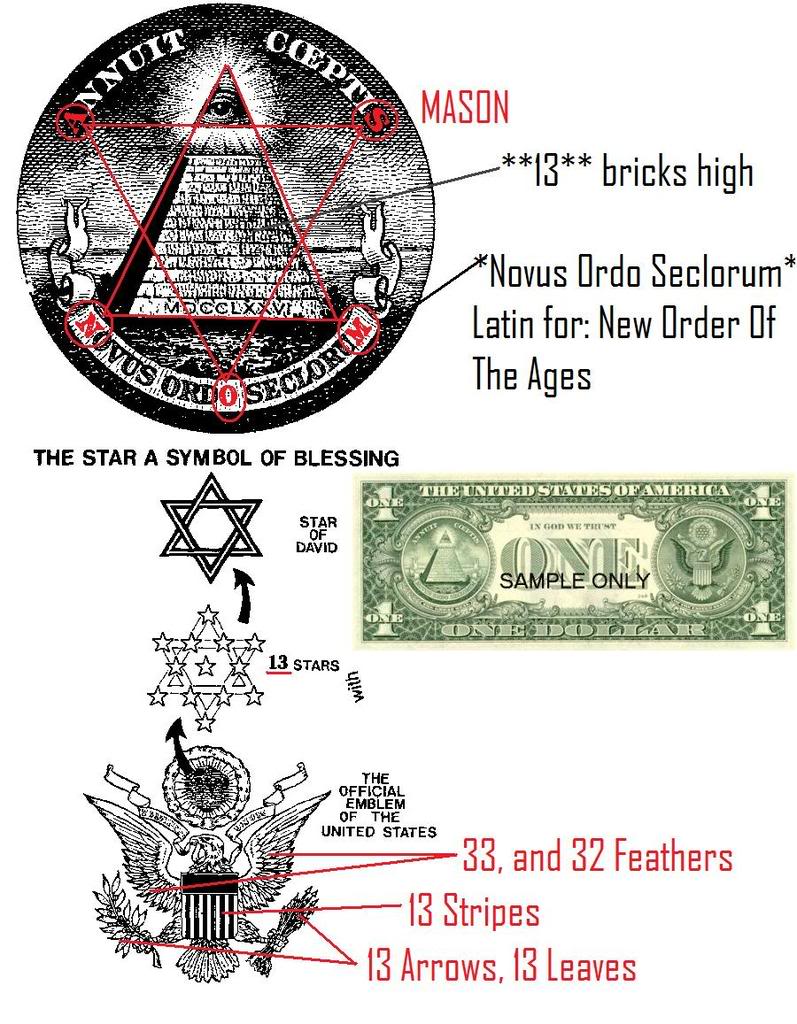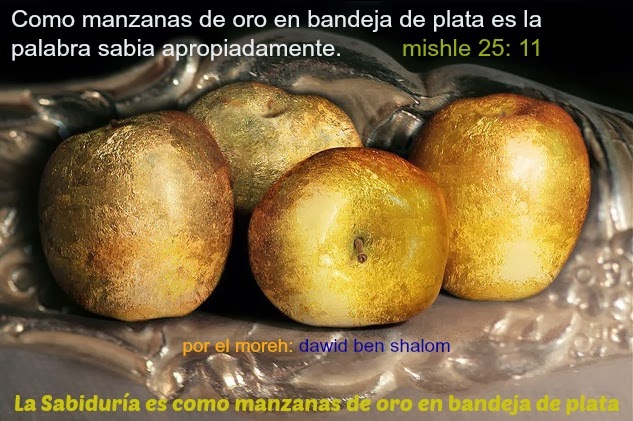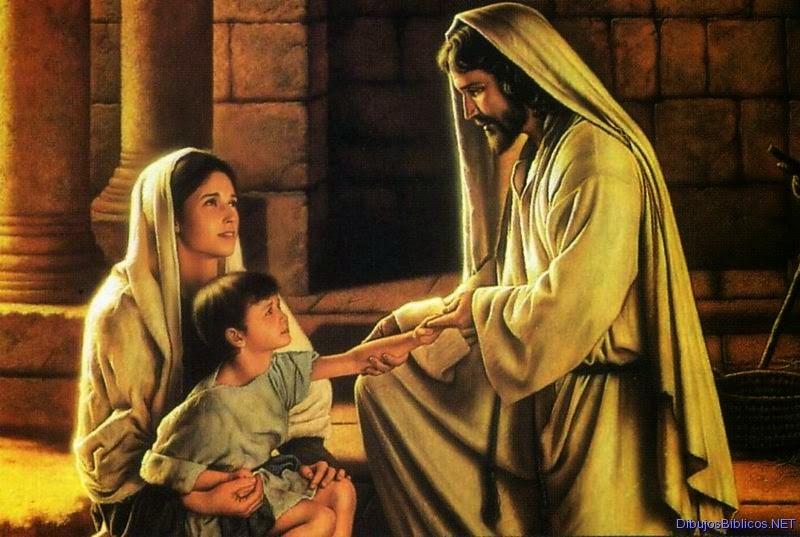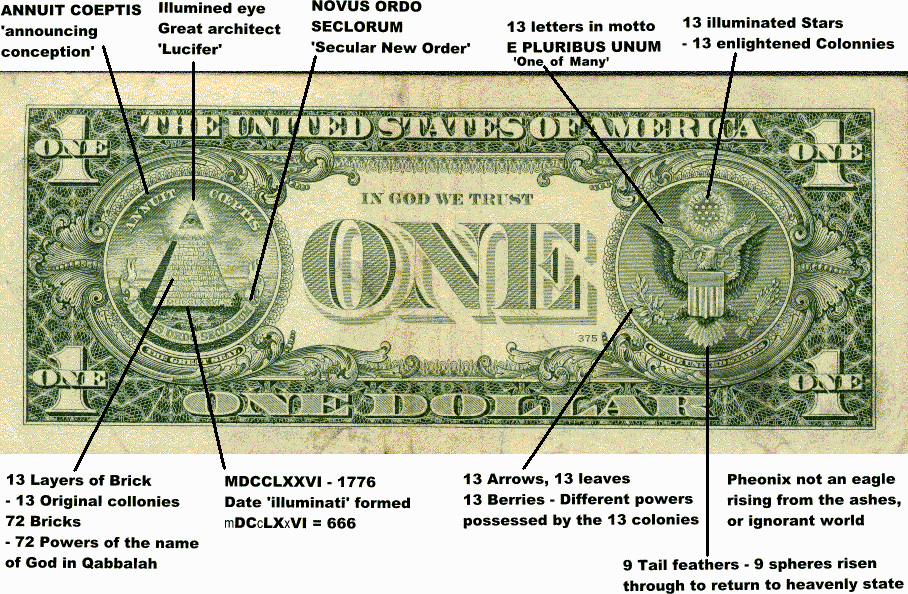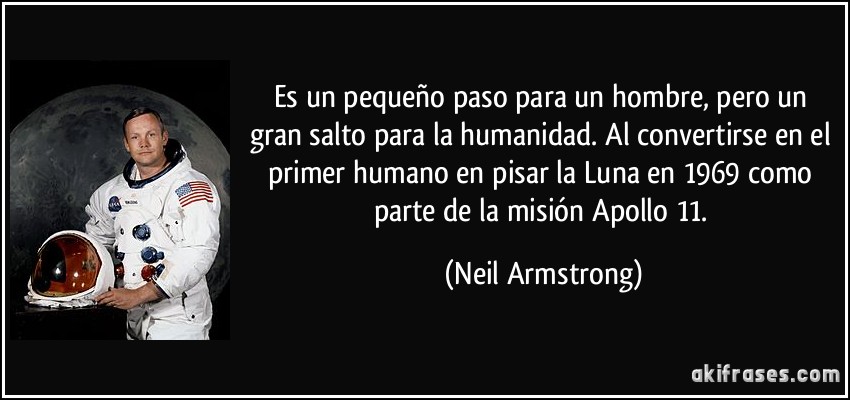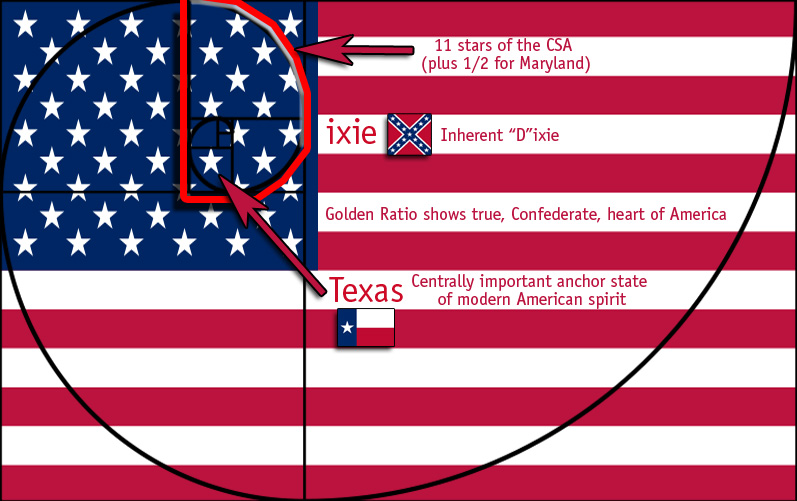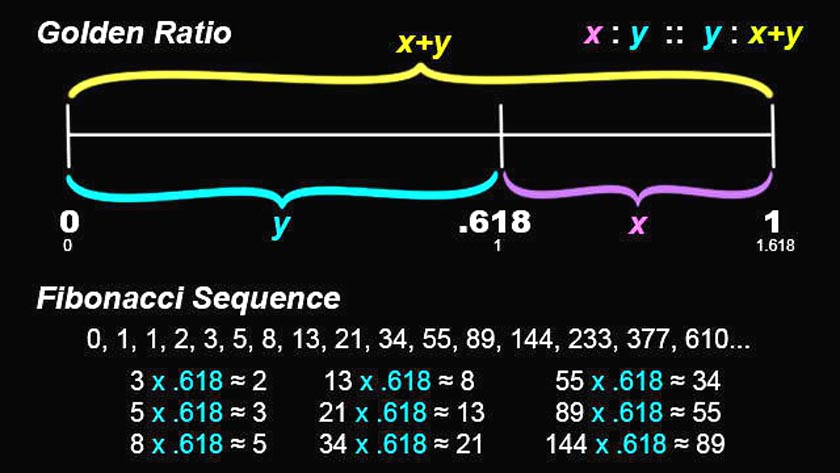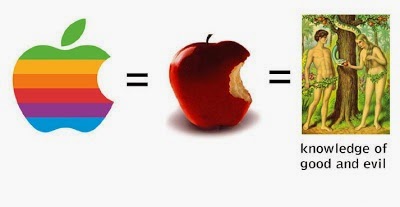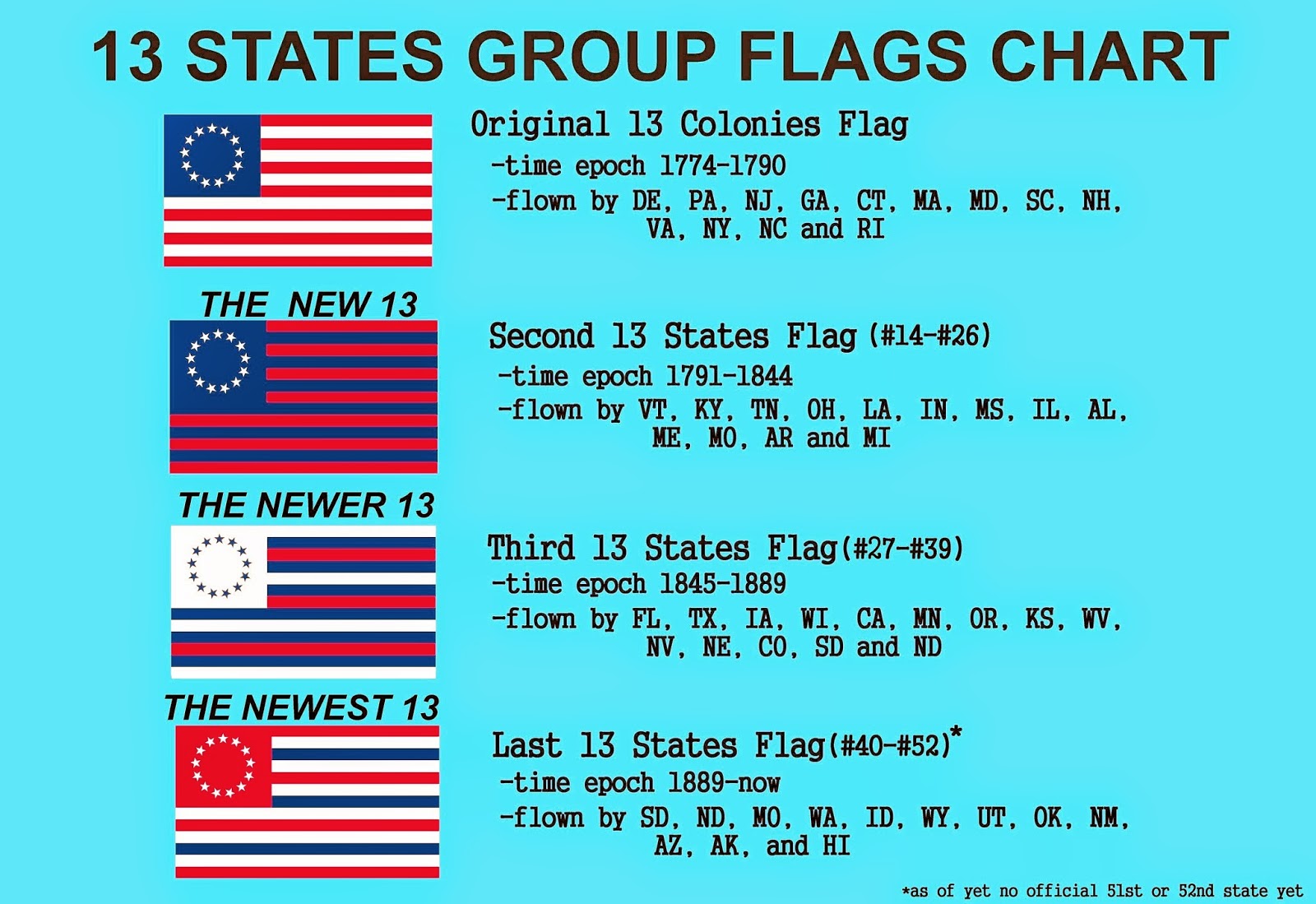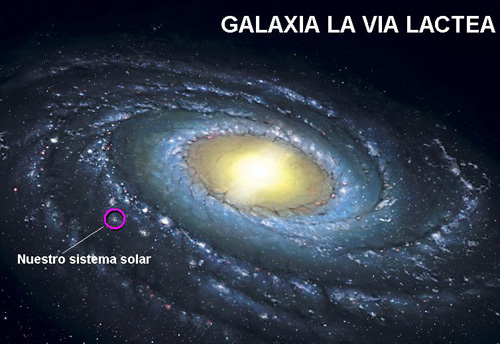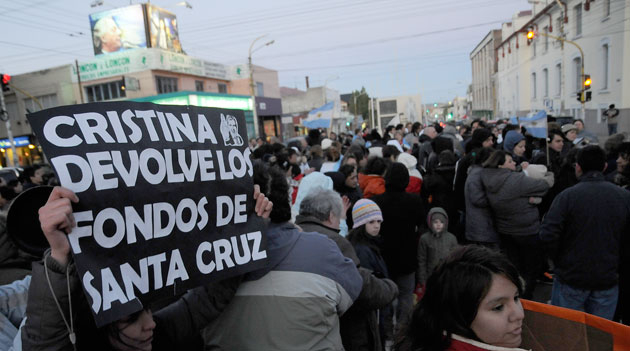|
|
|
EVERYTHING IS CONNECTED AND THERE ARE NO COINCIDENCES |
|
|
|
|
|
ISLA SAN GIORGIO (VENECIA)=GEORGE LEMAITRE
GEMATRIA EN INGLES DE SEED=33
GEMATRIA EN INGLES DE GATE=33
SARA (CE-SAREA DE FILIPO)=PARALELO 33
 the Apple
| milky way in Simple Gematria Equals: 119 |
( |
m 13 |
i9 |
l 12 |
k 11 |
y 25 |
0 |
w 23 |
a1 |
y 25 |
) |
| queen mary in Simple Gematria Equals: 119 |
( |
q 17 |
u 21 |
e5 |
e5 |
n 14 |
0 |
m 13 |
a1 |
r 18 |
y 25 |
|
| hebrew calendar in Simple Gematria Equals: 119 |
( |
h8 |
e5 |
b2 |
r 18 |
e5 |
w 23 |
0 |
c3 |
a1 |
l 12 |
e5 |
n 14 |
d4 |
a1 |
r 18 |
| mary magdalene in Simple Gematria Equals: 119 |
( |
m 13 |
a1 |
r 18 |
y 25 |
0 |
m 13 |
a1 |
g7 |
d4 |
a1 |
l 12 |
e5 |
n 14 |
e5 |
|

|
|
|
|
|
ISLA SAN GIORGIO (VENECIA)=GEORGE LEMAITRE
GEMATRIA EN INGLES DE SEED=33
GEMATRIA EN INGLES DE GATE=33
SARA (CE-SAREA DE FILIPO)=PARALELO 33
 the Apple
| milky way in Simple Gematria Equals: 119 |
( |
m 13 |
i9 |
l 12 |
k 11 |
y 25 |
0 |
w 23 |
a1 |
y 25 |
) |
| queen mary in Simple Gematria Equals: 119 |
( |
q 17 |
u 21 |
e5 |
e5 |
n 14 |
0 |
m 13 |
a1 |
r 18 |
y 25 |
|
| hebrew calendar in Simple Gematria Equals: 119 |
( |
h8 |
e5 |
b2 |
r 18 |
e5 |
w 23 |
0 |
c3 |
a1 |
l 12 |
e5 |
n 14 |
d4 |
a1 |
r 18 |
| mary magdalene in Simple Gematria Equals: 119 |
( |
m 13 |
a1 |
r 18 |
y 25 |
0 |
m 13 |
a1 |
g7 |
d4 |
a1 |
l 12 |
e5 |
n 14 |
e5 |
|

|
|
|
|
|



16. Génesis 49:27 Benjamín es lobo arrebatador; A la mañana comerá la presa, Y a la tarde repartirá los despojos.
169. Romanos 11:1 Digo, pues: ¿Ha desechado Dios a su pueblo? En ninguna manera. Porque también yo soy israelita, de la descendencia de Abraham, de la tribu de Benjamín. 170. Filipenses 3:5 circuncidado al octavo día, del linaje de Israel, de la tribu de Benjamín, hebreo de hebreos; en cuanto a la ley, fariseo;
PABLO, ESTA EN FUNCION A LA MISMA SANTA CENA, OSEA EL MISMO RELOJ.
JERUSALEN ESTABA EN LA TRIBU DE BENJAMIN, OSEA QUE ES OBVIO QUE LA NUEVA JERUSALEN ES PABLO MISMO
PABLO/PEQUEÑO/PERRO/LOBO/GUERRA/MARTE/GRIAL
PABLO ES UN TIPO DEL GRIAL MISMO
16. Génesis 49:27 Benjamín es lobo arrebatador; A la mañana comerá la presa, Y a la tarde repartirá los despojos.
169. Romanos 11:1 Digo, pues: ¿Ha desechado Dios a su pueblo? En ninguna manera. Porque también yo soy israelita, de la descendencia de Abraham, de la tribu de Benjamín. 170. Filipenses 3:5 circuncidado al octavo día, del linaje de Israel, de la tribu de Benjamín, hebreo de hebreos; en cuanto a la ley, fariseo;
 LAS DOCE TRIBUS DE ISRAEL LAS DOCE TRIBUS DE ISRAEL

13 HIJOS MAS DINA, LA UNICA HIJA MUJER
JABOB=ISRAEL=VENCEDOR

The classic logarithmic Golden Spiral

LLAVE DE ORO Y DE PLATA AL IGUAL QUE LA MANZANA
| milky way in Simple Gematria Equals: 119 |
( |
m 13 |
i9 |
l 12 |
k 11 |
y 25 |
0 |
w 23 |
a1 |
y 25 |
) |
| queen mary in Simple Gematria Equals: 119 |
( |
q 17 |
u 21 |
e5 |
e5 |
n 14 |
0 |
m 13 |
a1 |
r 18 |
y 25 |
|
| hebrew calendar in Simple Gematria Equals: 119 |
( |
h8 |
e5 |
b2 |
r 18 |
e5 |
w 23 |
0 |
c3 |
a1 |
l 12 |
e5 |
n 14 |
d4 |
a1 |
r 18 |
| mary magdalene in Simple Gematria Equals: 119 |
( |
m 13 |
a1 |
r 18 |
y 25 |
0 |
m 13 |
a1 |
g7 |
d4 |
a1 |
l 12 |
e5 |
n 14 |
e5 |
|

| milky way in Simple Gematria Equals: 119 |
( |
m 13 |
i9 |
l 12 |
k 11 |
y 25 |
0 |
w 23 |
a1 |
y 25 |
) |
| queen mary in Simple Gematria Equals: 119 |
( |
q 17 |
u 21 |
e5 |
e5 |
n 14 |
0 |
m 13 |
a1 |
r 18 |
y 25 |
|
| hebrew calendar in Simple Gematria Equals: 119 |
( |
h8 |
e5 |
b2 |
r 18 |
e5 |
w 23 |
0 |
c3 |
a1 |
l 12 |
e5 |
n 14 |
d4 |
a1 |
r 18 |
| mary magdalene in Simple Gematria Equals: 119 |
( |
m 13 |
a1 |
r 18 |
y 25 |
0 |
m 13 |
a1 |
g7 |
d4 |
a1 |
l 12 |
e5 |
n 14 |
e5 |
|
|
|
|
|
|
| milky way in Simple Gematria Equals: 119 |
( |
m 13 |
i9 |
l 12 |
k 11 |
y 25 |
0 |
w 23 |
a1 |
y 25 |
) |
| queen mary in Simple Gematria Equals: 119 |
( |
q 17 |
u 21 |
e5 |
e5 |
n 14 |
0 |
m 13 |
a1 |
r 18 |
y 25 |
|
| hebrew calendar in Simple Gematria Equals: 119 |
( |
h8 |
e5 |
b2 |
r 18 |
e5 |
w 23 |
0 |
c3 |
a1 |
l 12 |
e5 |
n 14 |
d4 |
a1 |
r 18 |
| mary magdalene in Simple Gematria Equals: 119 |
( |
m 13 |
a1 |
r 18 |
y 25 |
0 |
m 13 |
a1 |
g7 |
d4 |
a1 |
l 12 |
e5 |
n 14 |
e5 |
|

|
|
|
|
|
|
|
|
Hércules (constelación)
De Wikipedia, la enciclopedia libre
Recibe su nombre del héroe mitológico, Hércules y es la quinta en tamaño de las 88 constelaciones modernas. También era una de las 48 constelaciones de Ptolomeo.
[editar] Características destacables
No tiene estrellas de primera magnitud, siendo la más brillante β Herculis con magnitud 2,78. μ Herculis se encuentra a 27,4 años luz de la Tierra. El Ápex solar (punto del cielo que indica la dirección hacia la que se mueve el Sol en su órbitaalrededor del centro de la galaxia) se encuentra en Hércules, cerca de ξ Herculis.
[editar] Estrellas principales
- α Herculis (Ras Algethi o Rasalgethi), de magnitud 3,31, es un sistema estelar triple, cuya estrella principal es una gigante roja variable.
- β Herculis (Kornephoros), la más brillante de la constelación con magnitud 2,78, una estrella gigante amarilla.
- γ Herculis, gigante blanca de magnitud 3,74. Es una binaria espectroscópica con un período orbital de 11,9 días.
- δ Herculis (Sarin), estrella blanca de magnitud 3,12; es una estrella binaria cuyas componentes han sido resueltas por interferometría.
- ε Herculis, binaria espectroscópica de magnitud 3,91.
- ζ Herculis, la segunda más brillante de la constelación con magnitud 2,89, estrella doble formada por dos estrellas amarillas de desigual brillo.
- η Herculis, gigante amarilla de magnitud 3,49.
- θ Herculis, gigante luminosa naranja de magnitud 3,85.
- ι Herculis, subgigante azul de magnitud 3,79; tres estrellas más completan este sistema estelar cuádruple.
- κ Herculis A y κ Herculis B, dos gigantes que forman una doble óptica.
- λ Herculis (Maasym), gigante naranja de magnitud 4,40.
- μ Herculis, sistema estelar cercano que dista del Sistema Solar 27,4 años luz.
- π Herculis, gigante naranja de magnitud 3,16.
- ρ Herculis, estrella doble cuyas componentes, separadas 4 segundos de arco, brillan con magnitud 4,56 y 5,42.
- τ Herculis, estrella B pulsante lenta (SPB) con una tenue compañera a 7,6 segundos de arco.
- χ Herculis, enana amarilla de baja metalicidad que se encuentra a 52 años luz de distancia.
- ω Herculis (Kajam), de magnitud 4,57.
- 8 Herculis, estrella blanca de magnitud 6,13 que forma una doble óptica con Kappa Herculis —separación 0,2º—.
- 14 Herculis, enana naranja a 59,2 años luz con una enana marrón o planeta gigante alrededor. En 2006 se descubrió un posible segundo compañero, aún sin confirmar.
- 30 Herculis (g Herculis), gigante roja y variable semirregular cuyo brillo oscila entre magnitud 4,3 y 6,3 en un ciclo de 89,2 días.
- 68 Herculis (u Herculis), binaria eclipsante en donde existe transferencia de masa desde la secundaria hacia la primaria.
- 72 Herculis (w Herculis), enana amarilla similar al Sol a 47 años luz de distancia.
- 89 Herculis, supergigante amarilla en las etapas finales de su evolución estelar.
- 95 Herculis, estrella binaria compuesta por una gigante blanca y una gigante amarilla separadas 6,3 segundos de arco.
- 99 Herculis, binaria de baja metalicidad cuya primaria es una enana amarilla de magnitud 5,20.
- 101 Herculis, gigante blanca de magnitud 5,11.
- 109 Herculis, gigante naranja de magnitud 3,84, la duodécima estrella más brillante de la constelación.
- 111 Herculis, estrella blanca de magnitud 4,35.
- X Herculis, variable pulsante semirregular cuyo brillo varía entre magnitud 6 y 7 en un período de 95 días.
- SZ Herculis y FN Herculis, binarias eclipsantes de magnitud 9,94 y 11,08 respectivamente.
- UX Herculis, binaria eclipsante de magnitud 9,05; durante el eclipse principal su brillo disminuye 1,16 magnitudes.
- OP Herculis, gigante luminosa roja variable entre magnitud 5,85 y 6,73.
- HD 147506, subgigante amarilla en donde se ha detectado un planeta masivo (HAT-P-2b) en una órbita excéntricacercana a la estrella.
- HD 149026, estrella subgigante con un planeta cuya masa es similar a la de Saturno.
- HD 154345, enana amarilla a 58,91 años luz con un planeta extrasolar.
- Gliese 623, estrella binaria compuesta por dos enanas rojas.
- Gliese 686 y Gliese 649, enanas rojas a 26,5 y 33,7 años luz respectivamente; la segunda de ellas posee un planeta.
- HD 155358, estrella de baja metalicidad con dos planetas que interactúan gravitacionalmente.
- Gliese 638 y HR 6806, enanas naranjas situadas respectivamente a 31,9 y 36,2 años luz de distancia de la Tierra.
- GD 362, enana blanca con un anillo similar a los de Saturno.
- http://es.wikipedia.org/wiki/H%C3%A9rcules_(constelaci%C3%B3n)
  
ISLA SAN GIORGIO (VENECIA)=GEORGE LEMAITRE
GEMATRIA EN INGLES DE SEED=33
GEMATRIA EN INGLES DE GATE=33
SARA (CE-SAREA DE FILIPO)=PARALELO 33
"¡Oh profundidad de las riquezas de la sabiduría (sophia)
y de la ciencia (gnwsiV, gnosis) de Dios!
¡Cuán incomprensibles son sus juicios, e inescrutables sus caminos!"
(Romanos, 11: 33).
25 DE ABRIL=DIA DE SAN MARCOS
22 DE JULIO=DIA DE MARIA LA MAGDALENA
|
|
|
|
|
|
EL MISMO DIA DEL EXPERIMENTO FILADELFIA, OSEA EL 28 DE OCTUBRE
|
|
|
|
|
En 1961, el “Papa Bueno” se encontró en Castel Gandolfo cara a cara con un ser que bajó de una nave y que “estaba rodeado de una luz dorada”.
El italiano Angelo Giuseppe Roncalli (1881-1963), mejor conocido como el Papa Juan XXIII, fue Sumo Pontífice entre los años 1958 y 1963. También llamado “Il Papa Buono” (“El Papa Bueno”), aparte de ser uno de los papas más carismáticos y queridos de la historia, tenía el don de la profecía, realizando en su juventud varias predicciones sobre los cambios políticos que se avecinaban en el mundo y que se cumplirían en los años venideros, como el inicio de la Segunda Guerra Mundial, el fin del imperio británico, el asesinato de los hermanos Kennedy y Mahatma Gandhi y el derrumbe del muro de Berlín, así como otros hechos que precederían a la segunda venida de Cristo y el fin del mundo (que, según el Papa Juan XXIII, debiera ocurrir el año 2033), con la consecuente restauración del «Reino de Dios en la Tierra».

El Papa Juan XXIII, autor de las encíclicas “Mater et magistra” y “Pacem in teris”, fue un gran pensador y visionario, que trató de modificar algunas de las estructuras de poder que dominaban el aspecto político y económico de la Iglesia. Y uno de los sucesos más llamativos en su vida tuvo relación con un supuesto encuentro que el Sumo Pontífice habría tenido con un hombre que habría llegado desde el cielo, en una especie de nave voladora, lo que habría marcado la vida y concepción de Juan XXIII respecto a la cosmovisión del Universo y el hombre. Este suceso ocurrió en la localidad veraniega papal de Castel Gandolfo en 1961, y fue revelada por Loris Capovilla, el secretario personal y asistente papal de Juan XXIII, 20 años después de su muerte, a un semanario inglés.
El relato que hizo este asistente papal (quien sería nombrado Cardenal en 2014 por el Papa Francisco) fue el siguiente:
“El Papa y yo estábamos caminando a través del jardín, una noche del mes de julio de 1961, cuando observamos sobre nuestras cabezas una nave muy luminosa. Era de forma oval y tenía luces intermitentes, de un color azul y ámbar. La nave pareció volar sobre nuestras cabezas por unos minutos, para luego aterrizar sobre el césped, en el lado sur del jardín. Un extraño ser salió de la nave: tenía forma humana, a excepción de que su cuerpo estaba rodeado de una luz dorada y tenía orejas más alargadas que las nuestras. Su Santidad y yo nos arrodillamos. No sabíamos lo que estábamos viendo, pero supimos que lo que fuese no era de este mundo; por lo tanto debía ser un acontecimiento celestial.

Rezamos y cuando levantamos nuestras cabezas, el ser todavía estaba allí. Esto nos comprobó que no era una visión lo que veíamos. El Santo Padre se levantó y caminó hacia el ser. Los dos estuvieron alrededor de 20 minutos uno frente al otro; se los veía gesticular como si hablaran, pero no se sentían sonidos de voces. Ellos no me llamaron, por lo que permanecí donde estaba y no pude oír nada de lo que hablaron.
Luego, el ser se dio la vuelta y caminó hacia su nave y enseguida se elevó. Su Santidad dio media vuelta hacia mi y me dijo: “Los hijos de Dios están en todas partes; aunque algunas veces tenemos dificultades en reconocer a nuestros propios hermanos”.
Después que el ser extraterrestre retornó a su nave y despegó, el Papa y yo continuamos nuestro paseo como si nada hubiese pasado».

Según relató su secretario personal, Juan XXIII nunca quiso contarle lo que había hablado con el extraño visitante que bajó del cielo en ese lejano día del verano europeo de 1961.
Esta, por cierto, no fue la única mención que personeros relacionados con la Iglesia Católica han hecho con respecto a la posibilidad de la existencia de vida inteligente más allá de nuestro planeta. En el año 2008, el director del Observatorio del Vaticano, José Gabriel Funes, afirmó en una entrevista para el periódico italiano L’Observatorie Romano que “Dios pudo haber creado vida inteligente en otras parte del Universo e incluso podría tratarse de nuestros hermanos”, una declaración que en cuestión de minutos dio la vuelta al mundo.
https://www.guioteca.com/fenomenos-paranormales/el-supuesto-encuentro-del-papa-juan-xxiii-con-un-hombre-venido-del-cielo/ |
|
|
|
|
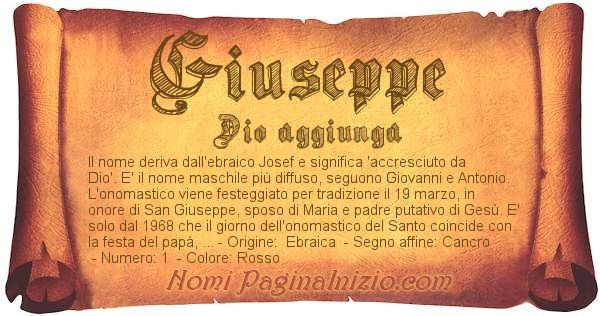
EL MISMO DIA DEL EXPERIMENTO FILADELFIA, OSEA EL 28 DE OCTUBRE

EL PAPA JUAN XXIII, EL PAPA DE VENECIA, TAMBIEN FUE ELEGIDO UN 28 DE OCTUBRE. ¿PORQUE ES EN LA CARTA DE JUDAS TADEO, CUYO DIA ES EL MISMO 28 DE OCTUBRE ADONDE SE HACE REFERENCIA AL LIBRO DE ENOC?
- 1938: en el marco de la Guerra Civil Española, las Brigadas Internacionales se marchan de España.
- 1940: inicio de la Guerra Greco-Italiana con la entrada de Grecia en la Segunda Guerra Mundial.
- 1943: en el puerto de Filadelfia ―de acuerdo con un bulo creado en 1955 por el ufólogo estadounidense Morris K. Jessup (1900-1959)―, en esta fecha supuestamente se realizó la operación militar deteletransportación «Experimento Filadelfia».
- 1944: en La Coruña (España), se inaugura el Estadio Municipal de Riazor.
- 1956: en España se inauguran los servicios de Televisión Española, que al día siguiente comenzó a emitir sus programas de manera regular.
- 1958: en la Ciudad del Vaticano, el cardenal Ángelo Giuseppe Roncalli es elegido papa, y adopta el nombre de Juan XXIII. (NEXO CON EL CASTILLO SAN ANGELO, LA CLAVE DE LA TRASLACION EN EL TIEMPO EN EL VATICANO)
- 1958: a 256 metros bajo tierra, en el área U12b.04 del Sitio de pruebas atómicas de Nevada (a unos 100 km al noroeste de la ciudad de Las Vegas), a las 16:00 (hora local) Estados Unidos detona su bomba atómica Evans, de 0,055 kilotones. Es la bomba n.º 189 de las 1132 que Estados Unidos detonó entre 1945 y 1992.
- 1958: En Suecia, Boris Pasternak obtiene el Premio Nobel de Literatura.
- 1958: la Unión Soviética le concede a Argentina un crédito (equivalente a 100 millones de dólares de aquella época, que equivalen a 835 millones de 2016)[2] para la compra de equipos petroleros soviéticos, a una tasa de interés del 2,5 % anual.
- 2005: en Venezuela, el presidente Hugo Chávez declara al país «territorio libre de analfabetismo».
- 2005: México se convierte en el centésimo país que ratifica el estatuto de la Corte Penal Internacional.
- 2007: Cristina Fernández se convierte en la primera mujer electa presidenta deArgentina. En 1974, María Estela Martínezhabía sido electa vicepresidenta, y se convirtió en presidenta tras la muerte del presidente Perón.
- 2007: en la Ciudad del Vaticano, el papa Benedicto XVI beatifica a los religiosos españoles de la Guerra Civil Española.
https://es.wikipedia.org/wiki/28_de_octubre
|
|
|
|
|
|
|
|
|
|
|
UFO MOTHERSHIP MARY MAGDALENE?
Mary Magdalene transparent like ufo hovering over mary magdalenes head while her holding baby jesus real ufo in portrait has one ufo now a mothership too ?

certain light patterns exposes ufo’s from the invisibility shields.
Reference; Vancouver fireworks light show exposes ufo mothership
– Keith Ranville
keith_ranville@hotmail.com
https://keithranville.wordpress.com/2012/10/13/ufo-mothership-mary-magdalene-news/
|
|
|
|
|
“The most effective way to destroy people is to deny and obliterate their own understanding of their history.”
---- George Orwell
My own reproduction of the Templar relics in the form of a female silver head containing a couple of skull bones of a small woman with the word Caput LVIII M.
Templar Foundations
A Templar ship
Brass Plate
Magdalene Vault
During my past life regression along with my spiritual portrait, my research on Mary Magdalene and my conversations with various mediums and historians there is one group of people who keep cropping up time and time again, The Knights Templar.
The Templars were founded around the year 1118 as an order of fighting monks whose job was to protect the pilgrims visiting the Holy land. It must be noted here however that no evidence has suggested the Templars actually carried out this particular task. Moreover, there have been suggestions their actual task was for something else like excavation work. It’s also important to note that the order began with only nine members for the first nine or so years which would have made it very difficult to cover all pilgrim routes to the Holy land.
By 1127 the Templars had established themselves in Western Europe with countries including Portugal, France, England and Scotland. The church had even officially recognized them as a religious order dedicated to the defence of Christendom. Further down the line in 1139, a papal bull was issued that the Templars would owe allegiance to the pope only, making them immune to political and religious authorities.
Sophia
Old antique Templar pendant
Magdalene Vault
However during the latter part of the 12th century the Templars were facing serious problems. The Templars enormous wealth and influence which had built up over a number of years brought them into growing opposition to the Church and worldly monarchs. The Knights Templar were accused of many heinous crimes including denial of an immortal Christ, ritual murders and of worshipping a bearded head called Baphomet to name but a few.
It all came to a head in 1307 on Friday, October 13th, Jacques de Molay, Grand Master of the Templars and sixty of his Knights were imprisoned in Paris. In 1312 the pope officially dissolved the Knights Templar Order and then in 1314, after Jacques de Molay was burned alive, it seemed that the Knights Templar had ceased to exist, yet the Order continued in other countries under various names.
The Templars venerated Mary Magdalene and to them she represented Sophia, the female side of god. The word Sophia means “wisdom” and many people believe Sophia came to earth in the body of Mary Magdalene herself. During the Templars inquisition, one accusation amongst many was the worshipping of a goat head called “Baphomet”. It was not apparent why the Templars would worship such a thing until you apply something called the Atbash Cipher. This code was used as early as 500BC and was found to be used in some of the Dead Sea scrolls. When applied to the name Baphomet we get the name Sophia!
Relic and Cathars
Antique engravings from an old french book showing scenes from the Cathar crusade at Montseguer & the massacre at Beziers.
Magdalene Vault
Whilst on the subjects of heads, the Templars also had in their possession an interesting relic in the form of a female silver head containing a couple of skull bones of a small woman. It also came with a label on which read the following; Caput LVIII M (Head 58M). At first glance the message is a just a random few numbers and a letter but when you add five with eight you get thirteen. The letter M is the thirteen letter of the alphabet and together with the other M we have a double hit. Could this female relic have been the bones of Mary Magdalene? It is also noteworthy that the bones themselves were wrapped in a red cloth, the colour most associated with Mary Magdalene.
With the worship of Sophia through the disguise of Baphomet along with the 58M female headed relic we can possibly assume that the Templars regarded the importance of Sophia and acknowledge her human existence in the form of Mary Magdalene. It would not be the first time that both Sophia and Mary Magdalene have had a connection. In one Gnostic Gospel called The Pisits Sophia, Mary Magdalene plays a central role. It contains 46 questions in the dialogues of which 31 are asked by Mary Magdalene herself.
The Templars also had a connection with the Cathars, a Christian dualist or Gnostic movement which arrived in France around the 12th century. Like the Templars, they held Mary Magdalene in very high esteem calling her the femine aspect of the divine and recognised her equal status with Jesus. It is also known that at least one of the nine founders of the Templars was a Cathar. The 4th grand master of the Templars, Bertrand de Blanchefort was from a Cathar family.
Cathar Templar connection
Old St Mary Magdalene Relic
The Magdalene Museum
Another question which arises is why this particular area in the south of France is the focal point for both the Cathars and Templars. Could it be argued that the Magdalene arrival in France after the crucifixion set the motion of the events that followed? It is most likely that the Cathars had in their possession Gnostic Texts amongst their many other documents and may have had knowledge of the Magdalene voyage itself.
I strongly believe that the Templars were set up or influenced by the Cathars themselves with the objective to befriend the Church and gaining their trust, a kind of double agents type. One of the nine founding members, Hugues de Pagens, had ties with many Cathar people and possibly had been a Cathar himself. Indeed his genealogy points to Cathar heartland and another member, Godfrey de Saint-Omer appears to have been a relative of his. Their mission to protect the pilgrims from the holyland had simply been a “smoke screen” for their main intentions and activites.
Being just a normal Cathar would simply have got them nowhere, even before the Templar establishment they were already being hounded out including the burning at the stakes of Cathars in Orleans in 1022. They already had in their possession gospels and documents of Gnostic nature and more than likely had the Magdalene relics too. There was far more to be discovered in the Holyland which they could attain and keep. Also the Cathars knew the church at one point would come down hard on them, it was just a matter of time. What the Cathars needed was an army of knights to gain entry into the holyland and then to guard their sacred documents, relics and even their own beliefs and history.
Genocide
Templar Postcard, Temple London
Magdalene Vault
In 1208 began a series of wars known as the Cathar crusade which was organised and directed by the Catholic Church on the orders of Pope Innocent lll. From the first seize in Beziers on July 22nd 1209 (St Mary Magdalene’s feast day), to the last Cathar foothold at the Chateau of Montsegur, the Cathars were hounded out, burned at the stake and slaughtered in what many people call the first genocide of Europe.
During the crusades against the Cathars, the Templars had no choice but to remain neutral. If they sided with the Catholic Church then they would be fighting against their own people, against similar beliefs and even possibly their own families. On the other hand if they sided with the Cathars then it would put the order at risk and everything they protected including their connections with the “heretics” along with sacred documents and treasures would be revealed. The only logical thing to do was to stay neutral although it has been reported that the Templars did provide a haven for Cathar refugees and the increase of Cathars which joined the Templar ranks at that period of time rose sharply.
At the last stronghold of Cathars at Montsegur in 1244, a few Cathars did manage to escape the oncoming slaughter and with them they carried some form of treasure. It could well be that these Cathars and their treasure, ended up with the Templars and thus their treasure were safe and protected……...for now.
Fall of the Templars
Postcard
Port of La Rochelle, France
In the aftermath of the Cathar crusade the Templars remained protected and their influence and wealth was still growing. However by the turn of the 14th century the Templars had also attracted many powerful enemies, one of whom would lay the first stone to the demise of the Templar order, or at least, so he thought. Philippe lV of France had become envious and angry with the Templars, he owed them a great deal of money, thought they were arrogant and unruly ,no control was over the Templars as they only answered to the pope and all this on Philippe’s own territory. This all gave reason for Philippe to use heresy as an excuse to get rid of the order.
After the kidnapping and subsequent death of Pope Boniface Vlll along with the poison of another, namely Benedict Xl, Philippe conveniently secured the election of one Clement V, who was at the time archbishop of Bordeaux. This allowed Philippe to get what he wanted, the suppression of the Templars because after all, Clement V was indebted to him for making him pope.
From that moment on the Templars had become wanted men and many were tortured and interrogated on October 13th, 1307. Philippe may have quashed the Templars but their treasure had eluded him, nothing was found. It is more than probable that the Templars knew of this impending danger and took their treasure of wealth, sacred documents and relics and sent them to their naval base at La Rochelle were they transported all this onto around eighteen galleys ready to disembark. What happened to those ships remains a mystery, maybe some ended up in Portugal or more so to Scotland, the only monarchy in the 14 century Europe that did not recognize the authority of the Catholic Church.
Meanwhile the Templars were officially dissolved in 1312, despite the lack of evidence and information that Philippe had accused them of. In 1314 the grand master if the Templars, Jacque de Molay was roasted to death over a burning fire. Philippe had even gone to lengths after to persuade other monarchs to follow his lead to make sure no Templar survived but this mainly fell on deaf ears, particularly in Scotland. Philippe himself died of mystery causes at the end of 1314, the same year as he ordered the death of Molay. Indeed one month after the burning of the grand master, Pope clement was dead. It was reported that Molay had called his persecutors to join him before God’s court within a year while he was about to be burned!
http://www.midnightmagdalene.co.uk/428802766 |
|
|
|
|
Magdalena, la diosa madre
A Magdalena se la considera guardiana de la tradición sagrada del genuino culto a la "Diosa Madre", milenariamente más antiguo que cualquier religión.
El culto a la "Diosa" es el primer contacto con lo sagrado que tuvo el ser humano, y el único hasta que llegaron las primeras civilizaciones humanas, con los consabidos diositos Anunnaki.
En ese momento la "Diosa Madre", el arquetipo de la Madre Tierra original, se destapó como el culto a la diosa sumeria Inanna, y luego a Ishtar, Gea, Cibeles y un largo etcétera de adaptaciones culturales.

Venus de Willendor.
Eran sociedades matriarcales donde la supervivencia de la especie dependía de la fertilidad de la mujer, lo que la asociaba a la "divinidad".
Por eso, a la divinidad se la representaba con grandes pechos y órganos sexuales remarcados como las abundantes estatuillas encontradas. La mujer tenia a su cargo el cuidado de los niños y la recolección de frutos y raíces, con un contacto y un aprendizaje continuo con la naturaleza y sus ciclos. De ahí que se acabara asociando también a la diosa de la fertilidad con la naturaleza, una segunda "madre" que sustenta y protege al ser humano.
Así nacieron las "venus paleolíticas", una gran variedad de estatuillas femeninas como la de la izquierda, donde el rostro no está dibujado, pero sí sus genitales.
Las características femeninas, cadera, pecho, vientre suelen estar resaltadas y en esta figurilla en concreto, hay restos de pintura roja, como el habitual vestido de María Magdalena.
Uno de lo símbolos de la "Diosa Madre" primigenia es el "Huevo Cósmico", el germen de la creación, icono también de fertilidad y del ciclo de la vida. El huevo es en realidad el feto que nace y renace en la matriz, en el vientre abultado - en forma de huevo - que anticipa el comienzo de una nueva vida.
Las dos mitades del huevo, clara y yema, son el símbolo perfecto para la dualidad de la vida: femenino-masculino, noche-día, cielo-tierra y para la dualidad maniqueísta del Bien y el Mal, en la que basaban su creencia los Cátaros, que quizás por eso fueron tan devotos de María Magdalena.

Magdalena y el "Huevo Cósmico".
Y es que MM. fue la heredera del culto a la "Diosa Madre" y su "huevo primigenio" y por eso se la representa con el atributo de un huevo.
El arte sacro, que en sus tiempos tenia una importante función divulgativa, presenta a María Magdalena con el "Huevo Cósmico" pero también vestida con una túnica o un manto rojo, símbolo de la diosa iniciática, de la gran sacerdotisa: el arquetipo de la "mujer de rojo".
No sabemos si Caperucita Roja llevaba huevos en la cesta para su abuelita, pero si que sabemos que siempre vestía una capa de color rojo con la que se hecho más famosa aún que María Magdalena.
Psicoanalizar a la niña del bosque nos llevaría demasiado texto y lo dejaremos para mejor ocasión, pero dejamos constancia de esta "coincidencia" en su vestuario con Magdalena, que más adelante tomará sentido.

Los huevos, pintados de colores, fueron usados en el antiguo Egipto como ofrendas.
Mucho antes, en Babilonia, la diosa Ishtar había salido de un huevo que cayó del cielo al río Éufrates, donde fue recogido y empollado por unas palomas (de ahí el símbolo de la paloma blanca para la Virgen María, la impostora que se ha hecho pasar por madre de Jesús).
De ahí nace la tradición de pintar huevos por Pascua, ya que la fiesta de la Semana Santa se llama "Easter" (así la llaman en inglés) y debe su nombre a Ishtar/Easter.
La Iglesia, tan sincera como siempre, ha justificado este origen pagano de la Pascua diciendo que el huevo es "Cristo emergiendo de la tumba", una maniobra un poquito forzada.

Lady Gaga dentro del huevo del que emergió triunfante en la gala de los Grammy de 2011,
en un sentido homenaje a la "Diosa" que seguramente le está dando su beneficio.
A la derecha, su cuenta de Twitter con el huevo primigenio,
que la red social usa por defecto en los perfiles.
Los ortodoxos han solucionado mucho mejor la presencia del "Huevo Cósmico" en Magdalena.
Lo han hecho con una bonita historia según la cual, María Magdalena se fue a Roma predicar el evangelio, después de la resurrección de Jesús. Allí se entrevistó con el emperador Tiberio y sosteniendo un huevo de gallina, exclamó:
"¡Cristo ha resucitado!"
El emperador rió y dijo que eso era tan probable como que el huevo se volviera rojo (de nuevo el color rojo asociado a MM.).
Evidentemente el huevo se tiñó al momento.

Tradicional Mona de Pascua que se regala el Domingo de Resurreción en Cataluña
De la asociacion con el "Huevo Cósmico" de Magdalena nace también la tradición de la "Mona de Pascua", muy popular en Cataluña.
Aunque la modernidad ha robado parte de la esencia de la tradición, aún se pueden encontrar Monas con el genuino huevo de chocolate, que ya ha sido sustituido por Sirenitas, Pitufos, Messis, etc. de chocolate
Pero el origen de la "Mona de Pascua" no reside sólo en el huevo de chocolate, también en sus ingredientes.
Tanto la Mona como los bizcochos, llamados Madalenas en España, están hechos con huevo. El nombre de "Madalenas" (derivación de Magdalenas) proviene del nombre de la Santa, que aparece llorando desconsoladamente en varios episodios de la Biblia.
De ahí la frase "Llorar como una Magdalena", que es lo que hacen los bizcochos cuando gotean la leche en que han sido "mojadas".

La "Danza Cósmica" del "Huevo Cósmico" en la Catedral de Barcelona
Pero la estrecha relación de los huevos con Cataluña no termina en la respotería.
El "Ou com Balla" es una antigua costumbre de la festividad del Corpus, que se celebra en el claustro de la Catedral de Barcelona - allí empezó la tradición - y en otras fuentes de la ciudad y del resto de Cataluña.
El cascarón de un huevo vacío gira y gira sin caerse encima de un surtidor de agua, de ahí el nombre de la tradición: "El huevo como baila"
En el extremo oriental de los Pirineos, al norte de la actual Cataluña, el símbolo del "Huevo Cósmico" ha sido universalizado por Salvador Dalí. Su casa museo de Port Lligat y el Museo Dalí de Figueras lucen huevos gigantes en su tejado, evocando al símbolo de María Magdalena, el huevo de Inanna-Ishtar como "Diosa Madre".
El pintor tenía además un busto de tamaño natural de "su adorada" María Magdalena - con huevo incluido - en una de las estancias de la casa.
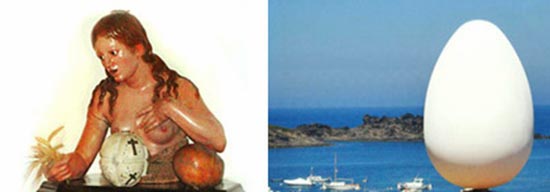
"Bajo el signo de Ishtar", y bajo el signo de Dalí,
en el tejado de su casa en Port Lligat y en una de sus estancias.
María Magdalena, fue una muy buena socia en todo tipo de negocios para el matrimonio Dalí.
Es público que su esposa Gala era una gran seguidora de la ocultista Madame Blavatski, de quien no entraremos a hablar en este momento, que cada uno busque y saque conclusiones.
En todo caso, la huella del culto luciferino es palpable en muchos detalles en la visita a la casa museo de Port Lligat.
https://www.bibliotecapleyades.net/sumer_anunnaki/esp_sumer_inanna01.htm |
|
|
 Primer Primer
 Anterior
45 a 59 de 89
Següent Anterior
45 a 59 de 89
Següent Darrer
Darrer
|





